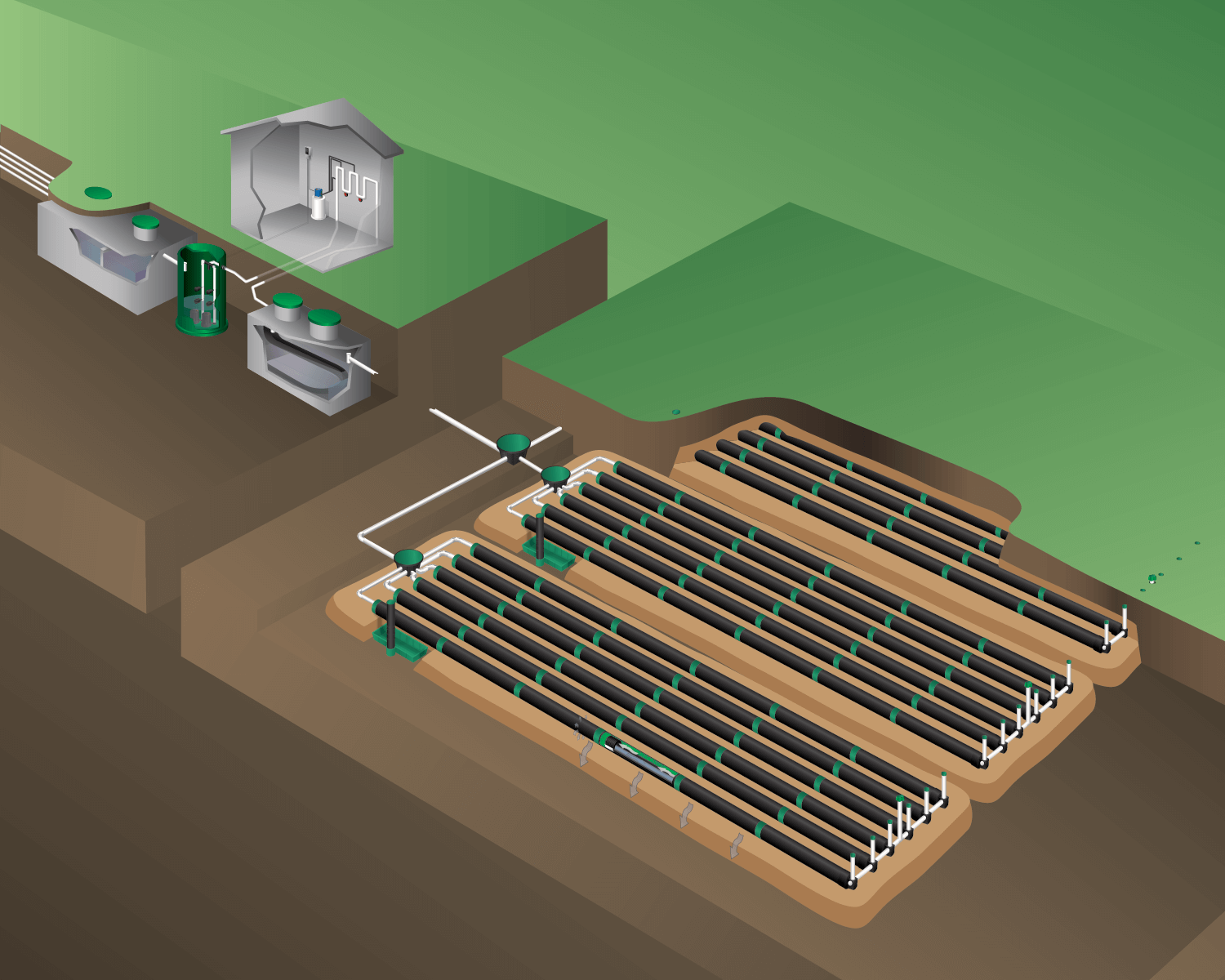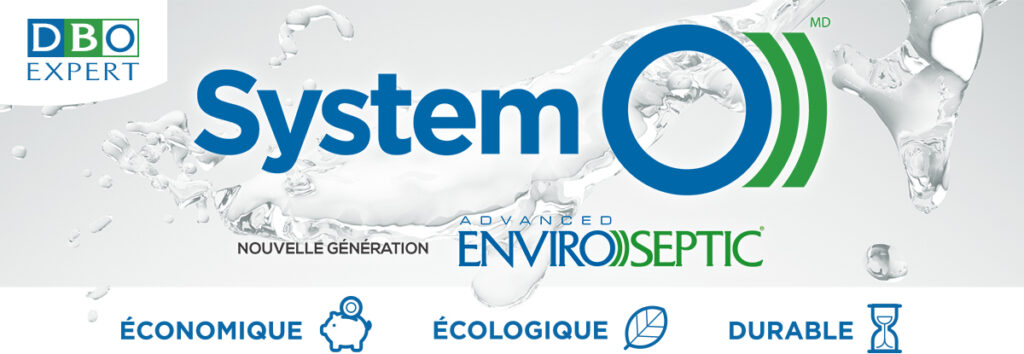Specifications of the septic system at the campground
| Country | Canada |
| Distributor | DBO Expert |
| Year | 2019 |
| Treatment Capacity | 68,000 L per day |
| Soil Analysis | Permeable |
| System Surface Area | 855.9 m2 |
| Treatment results are available upon request. | |
Particularities of the site
The installation includes a chemical phosphorus removal module as well as different treatment methods based on where the waste water is coming from.
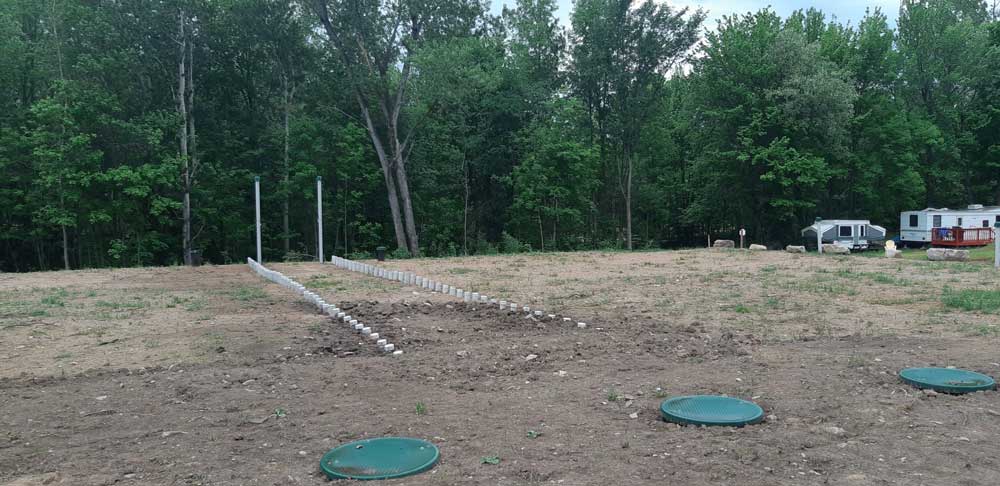
BACKGROUND
The Sandysun Lake Campground is located in south-western Québec. Due to its proximity to a lake where people swim, this project required a wastewater treatment system with phosphorus removal to prevent algae blooms from occurring.
Campgrounds tend to have very little wastewater during the week and large amounts near the end of the week when campers empty their holding tanks before leaving. This results in large fluctuations in organic matter and volume.
This System O)) septic system is preceded by both a primary treatment and a tertiary treatment.
- Primary treatment
Primary treatment of wastewater is a physical decantation ofliquids and solids, usually done in a septic tank, where the solids are pumped out at regular intervals (usu. 2 years).
The primary treatment is separated into two zones: The camping zone, and the restaurant zone.
For the camping zone, wastewater is collected in many different pretreatment tanks around the campground, whereas, in the restaurant zone, raw wastewater leaves the building and is collected in a 2.63 m3 grease trap where a large portion of the fats are removed. From the grease trap, the wastewater is pumped into a 11.5 m3 pre-treatment tank. Following this pre-treatment, the water flows to the tertiary treatment unit.
- tertiary treatment
The tertiary wasteware treatment, in this case, consists in removing the phosphorus from the wastewater.
The effluent leaving the septic tanks is pumped through
DBO Expert’s static agitator. As it passes through this module, a chemical coagulant is mixed into the wastewater by injection. This causes the inorganic forms of phosphorus in the wastewater to coagulate allowing them to precipitate in the 48.5 m³ settling tank. The settling tank effluent is then pumped into the System O)).
- secondary treatment
This System O)) uses three cells of 39 rows of five Advanced Enviro))Septic pipes for a total of 585 pipes. The wastewater flows along the length of the rows where it is treated by bacteria living in the pipes and in the filter sand during the infiltration process.
System O)) septic systems combine wastewater distribution, treatment and infiltration in one simple step.
Distribution
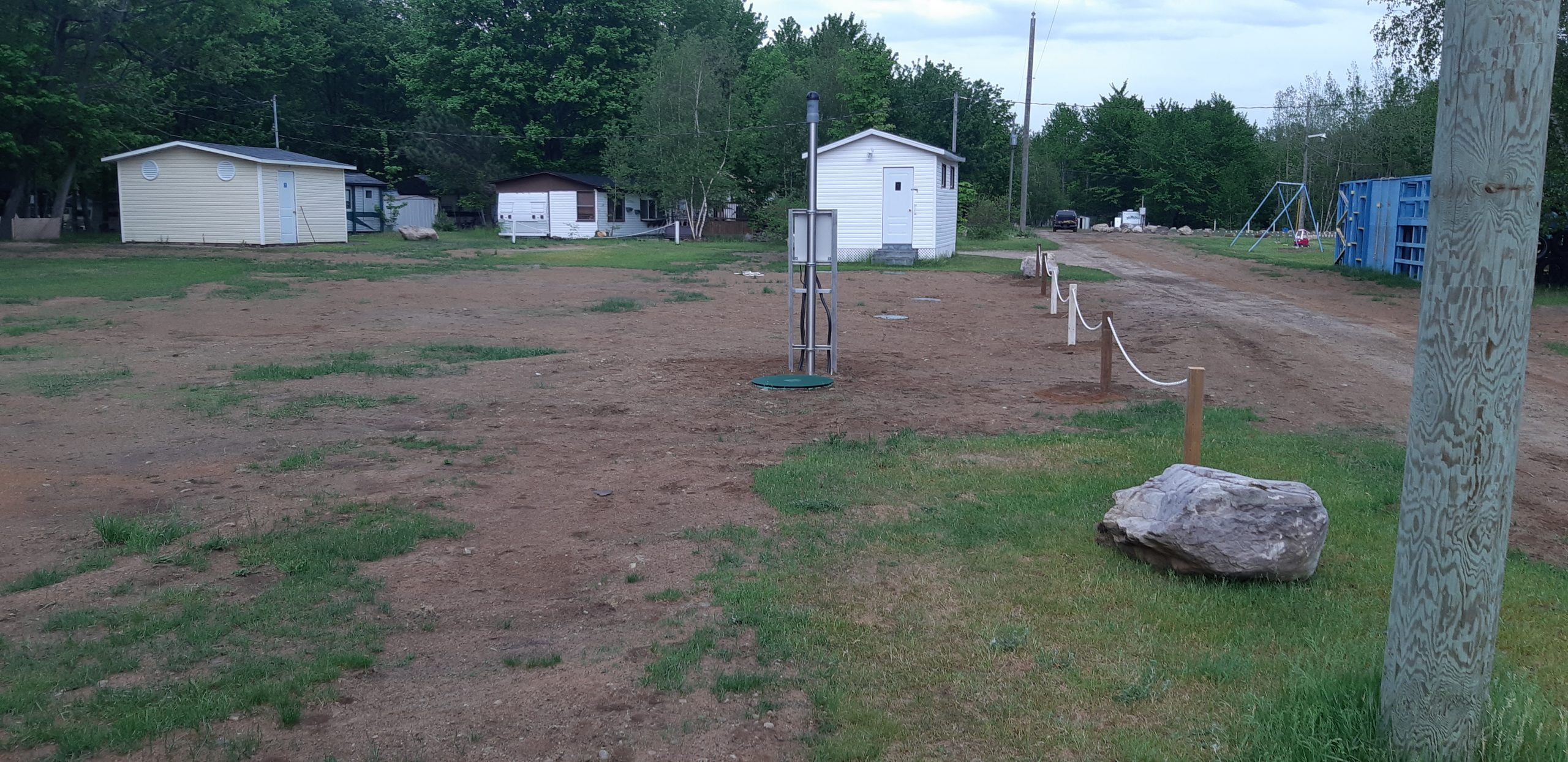
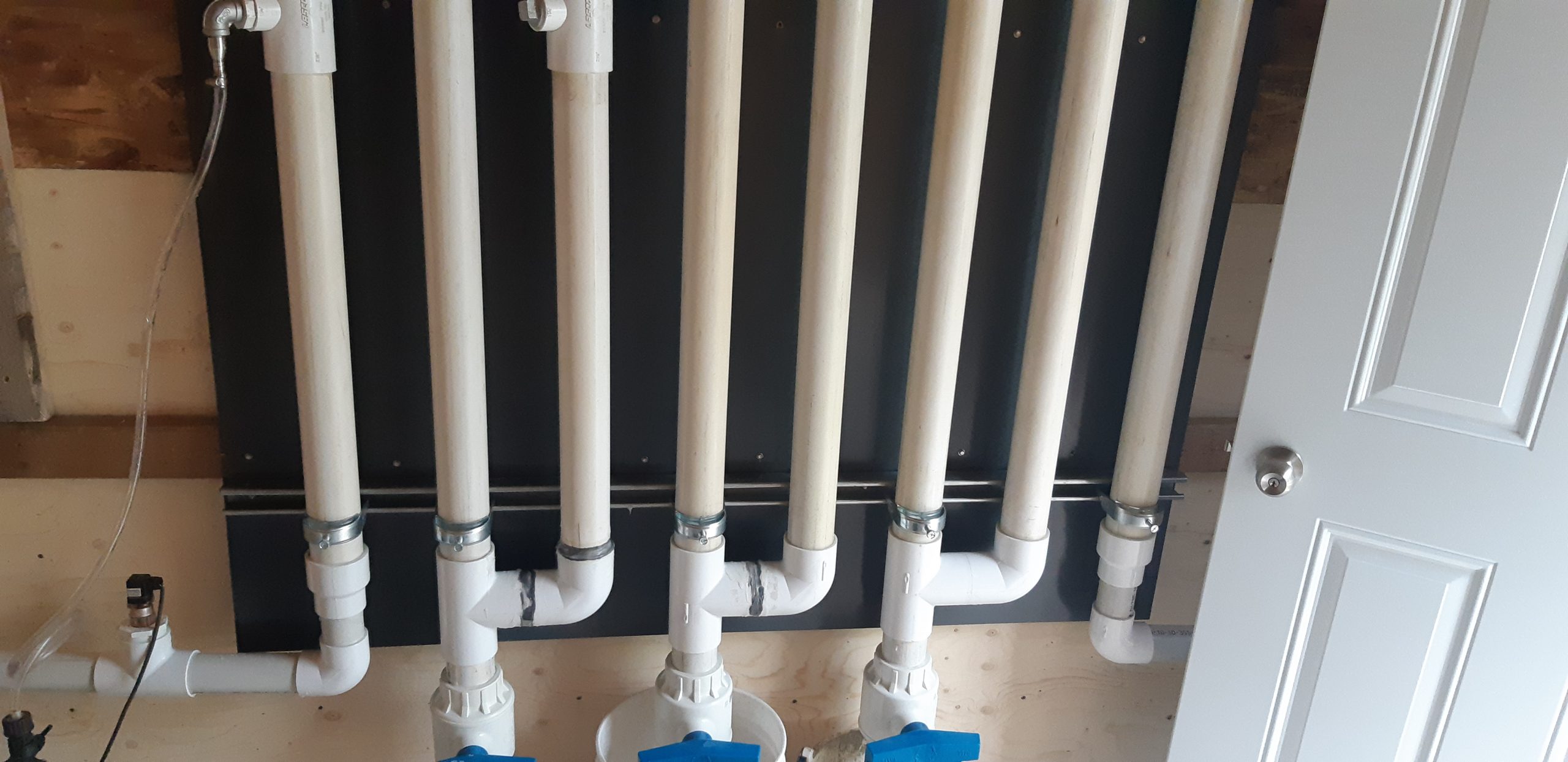
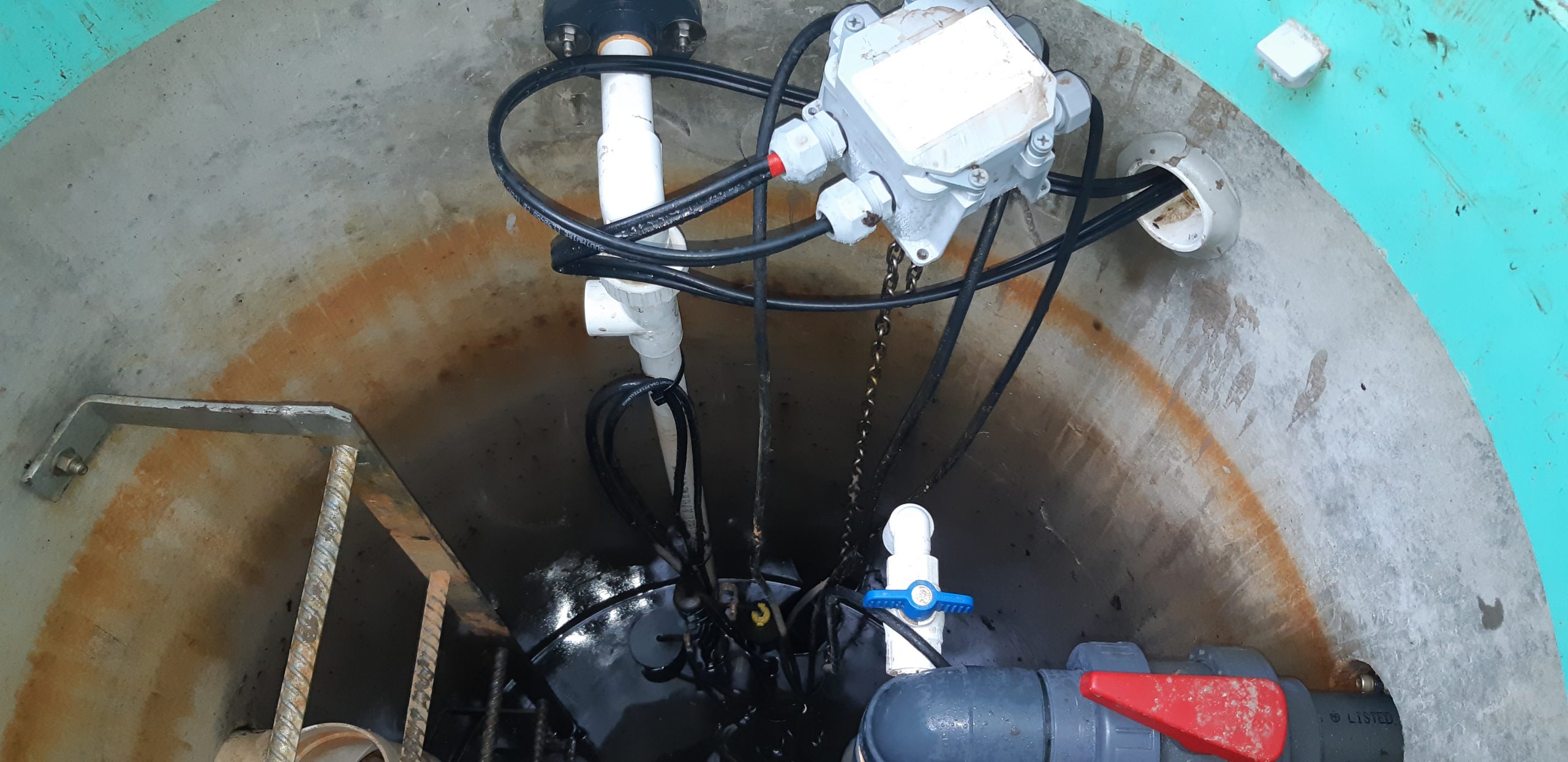
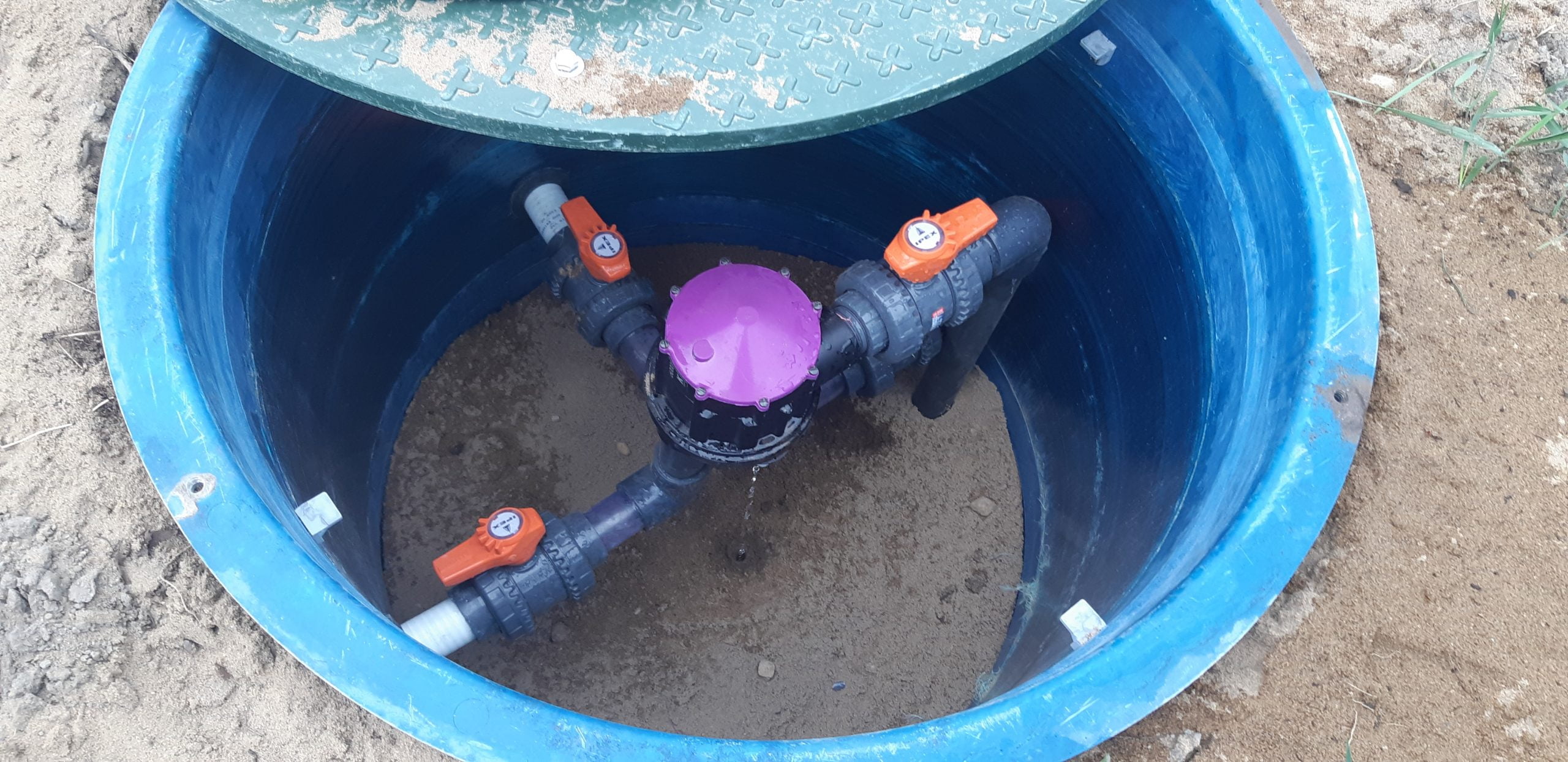
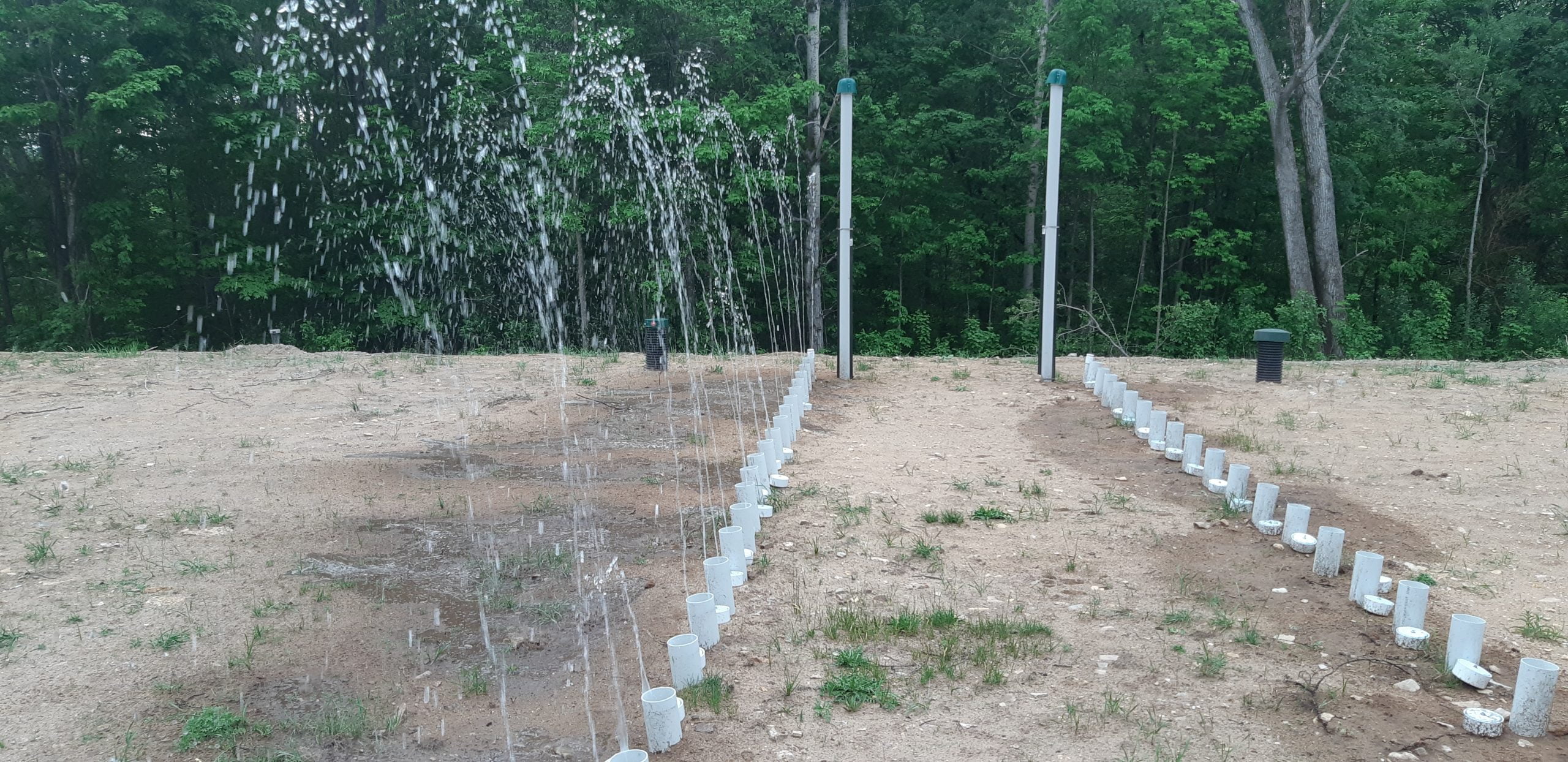
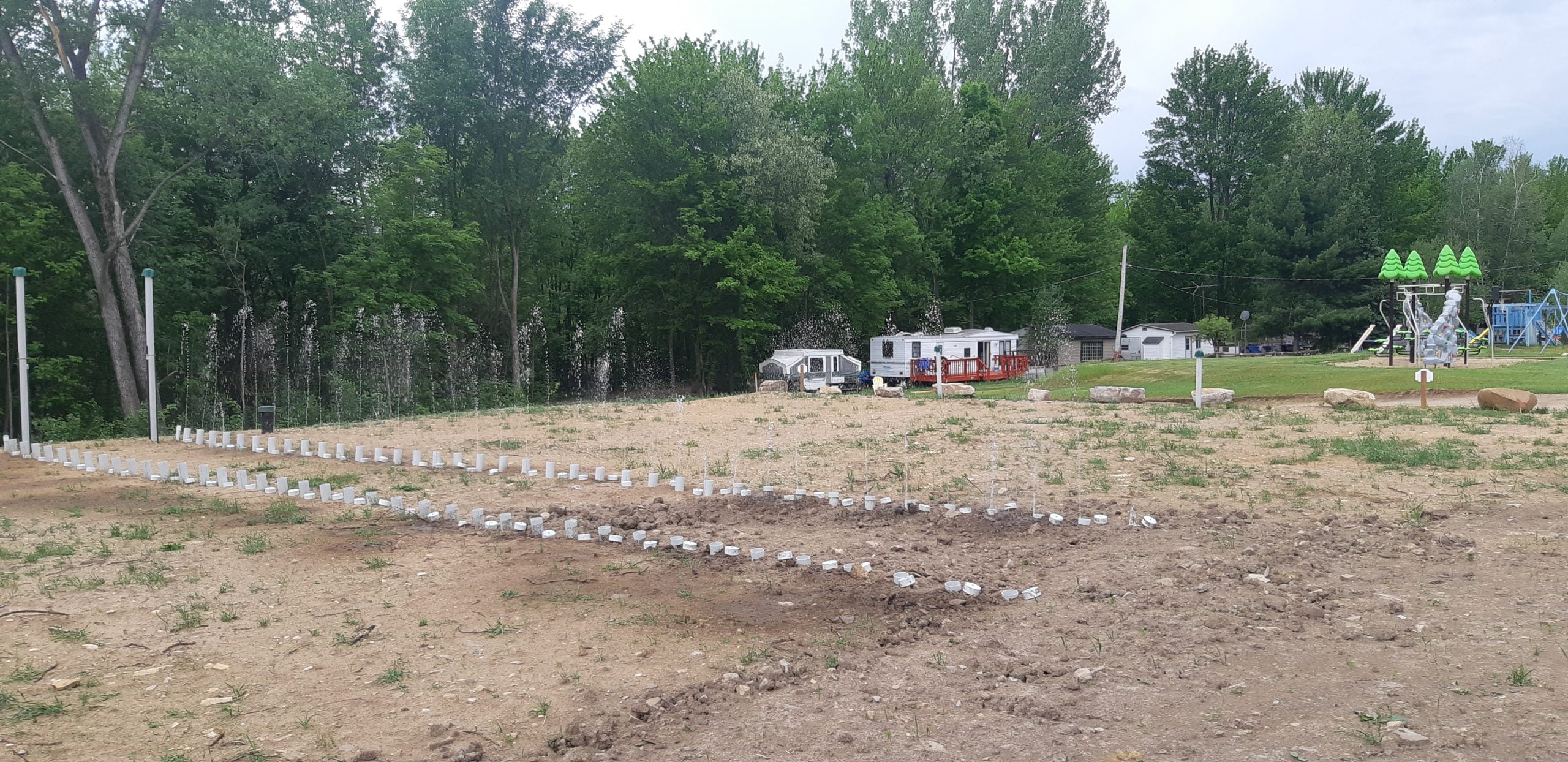
- economic advantages
By installing a System O)) with chemical phosphorus removal, the client saves money in the initial installation compared to other technologies.
A System O)) costs roughly the same as a conventional system, but has a lifespan of over 30 years. Conventional installations can start to fail after 15 years even if they are treated well.
If a system without phosphorus removal were to be used, there is the potential of a blue-green algae bloom resulting in the lake being closed to swimmers. This would result in significant economic losses.
And finally, System O)) requires little maintenance as there is no media filter to change. Moreover, DBO Expert can train employees, at the client’s request, to monitor the system and perform what maintenance is required, in this case mainly related to the chemical phosphorus removal module. This removes most of the annual maintenance costs.
- environmental advantages
Being located so close to water, there is a risk of poorly treated wastewater seeping into the nearby lake where campers swim.
Wastewater contains high levels of phosphorus that can lead to a rapid proliferation of a bacteria called blue-green algae that excretes dangerous toxins. By installing a System O)) with phosphorus removal, the risk of wastewater causing these blooms is eliminated.
The treated water leaving System O)) on average has:
- 15 mg/L or less of five-day carbonaceous biochemical oxygen demand (CBOD5),
- 15 mg/L or less of suspended solids (TSS),
- 50,000 CFU/100 ml or less fecal coliform, and
- 1 mg/L or less of phosphorus.
The treatment process of a conventional installation occurs in the soil, while System O)) treats the wastewater within the system,
protecting the native soil and nearby waterways.
